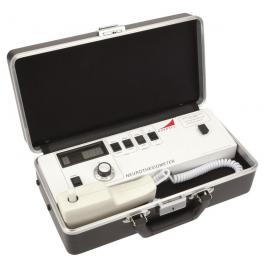Neurothesiometer vs Biothesiometer: Comparison for Diabetic Neuropathy Assessment
Neurothesiometer vs Biothesiometer: Comparison for Diabetic Neuropathy Assessment
Overview
Vibration Perception Threshold (VPT) testing is widely used to assess peripheral neuropathy in diabetic patients. Two commonly used tools are the Neurothesiometer and Biothesiometer. While both assess sensory nerve function, they differ in accuracy, features, and clinical utility.
|
Feature |
Biothesiometer |
|
|
Purpose |
Measures VPT in diabetic neuropathy with high precision |
Measures VPT primarily for screening |
|
Output Type |
Digital (precise voltage readout) |
Analog or semi-digital |
|
Accuracy |
High – suitable for research and clinical diagnosis |
Moderate – mainly for clinical screening |
|
Threshold Range |
0–50 volts (commonly) |
0–50 volts |
|
User Interface |
Digital display, automated features (some models) |
Simple dial or digital meter |
|
Ease of Use |
Moderate – requires some training |
Very easy – suitable for routine clinics |
|
Portability |
Compact models available |
Generally portable |
|
Cost |
Higher (due to precision and features) |
Lower to moderate |
|
Clinical Setting |
Research centers, specialist diabetes clinics |
Primary care, general diabetes screenings |
|
Application |
Biothesiometer |
|
|
Early detection |
Excellent |
Limited |
|
Routine screening |
Good |
Excellent |
|
Research trials |
Gold standard |
Rarely used |
|
Patient education |
Possible |
Common |
|
Resource-limited settings |
Less ideal |
Good choice |


